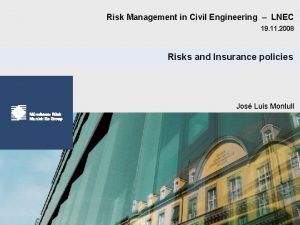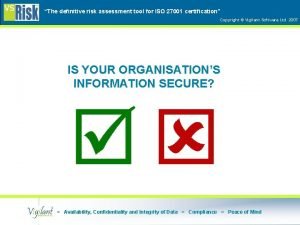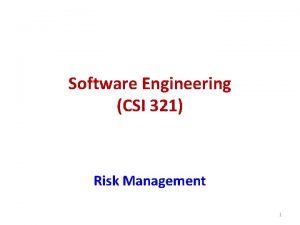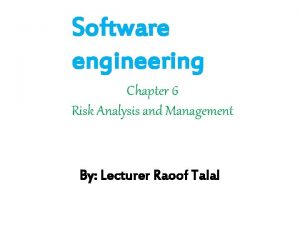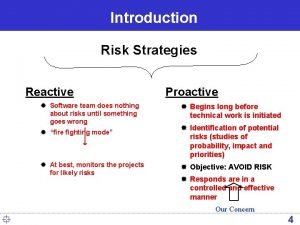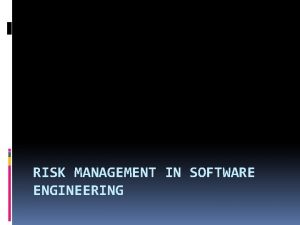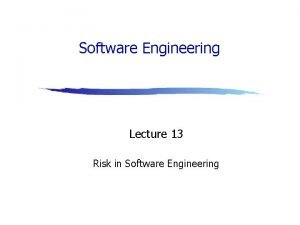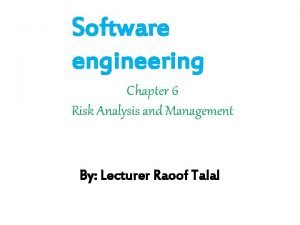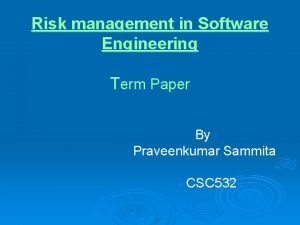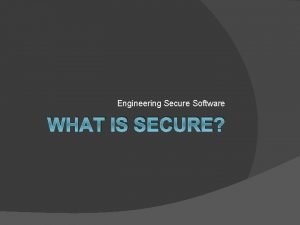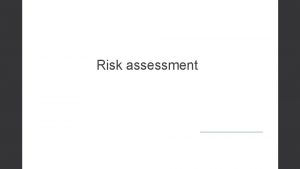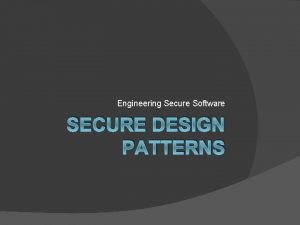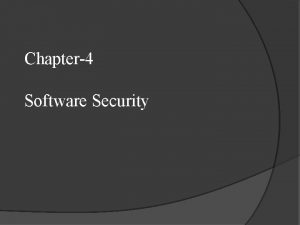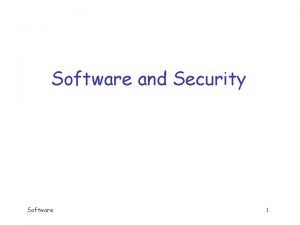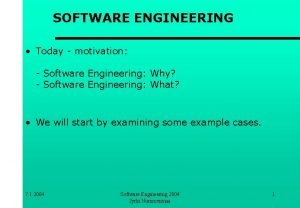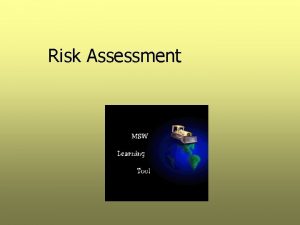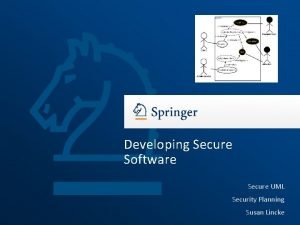Engineering Secure Software SECURITY RISK ASSESSMENT Why do














- Slides: 14

Engineering Secure Software SECURITY RISK ASSESSMENT

Why do we study risk? � Many outcomes are possible, not all are probable � Enumeration � Prioritization � Discussion

Naïve Security Risk Assessment � The naïve approach �Write down your worst fears for the system �Try to avoid those things � Cons �Requires a big “bag of tricks” �Easily overwhelming for security

What is risk? � p(occurrence)*impact � The risk associated with an event is the probability that the event will happen times the impact magnitude of the event � For the math-oriented… expected value � Matches how people generally think � Low p(occ), high impact … terrorist attacks, struck by lightning � High p(occ), low impact … credit card theft, keeping my old truck unlocked © 2011 -2012 Andrew Meneely

What is security risk? � p(exploit)*value of an asset � p(exploit) The probability that an exploit will occur on your system � Asset A [tangible or intangible] resource of the system that has value in confidentiality, integrity, availability

p(exploit) � Increased by more vulnerabilities � Increased by a far-reaching vulnerability � Increased by discoverable vulnerabilities � Increased by scope of the project � Other factors that we cannot control …although you cannot rely on security through obscurity alone … …although sometimes that is unavoidable… � Market share exposure � New malicious actors (e. g. activism spike) � Many, many other factors that we must ignore for the sake of simplicity � Thus, we generally assume p(vulnerability) is proportional to p(exploit)

Assets � Every software system has assets �Domain-specific �Domain-independent �Intangible properties e. g. patient records e. g. passwords e. g. availability � These can be identified at the requirements and design stages � Assets exist in the deployed system, so source code is not (necessarily) an asset

Places where assets live tables � Logs � User-supplied data � Sandboxing features � Configuration files � Built-in examples � Configuration consoles � Network traffic � File systems � Cookies � Security feature � User interfaces inputs � Database

Risk Assessment in Process � From: http: //www. cigital. com/papers/download/bsi 3 -risk. pdf

The Planning > The Plan � One of the most important elements of risk analysis is the process itself � Discussions that are brought up � Fighting over the mitigation strategies � Communication is very important at this stage � Assessing the change in risk is more sound than the final numbers � New assets? � Increased p(exploit)?

Abuse Cases vs. Risk Assessment � Abuse & Misuse Cases � Risk Assessment �Involves planning �Potentially infinite �Emphasize domain �Emphasize all risks �Scenario-driven �Quantitative �Originates from abusing �Originates from CIA, functionality �What if? assets, p(exploit) �What might?

Protection Poker � A combination of product & process �Trace stories to assets �Quantify the risk for prioritization ○ Ease of attack ○ Value of the asset �Discuss the elements of the risk � Originally designed for agile processes �Assumes we are in a sprint �Not comprehensive, but just-in-time

Story Points Estimation � In PP, we use story points �Dimensionless (unit-less) �Should not translate to hours, effort, etc. � Limited to a few choices �Why argue over 51 vs. 50? �Exponential in scale (~Fibonacci) � Ease of attack ~ p(vulnerability)

Protection Poker in Action � Identify some assets � Calibrate your asset values � Calibrate your ease of attack � For each item � Trace the item to the assets affected � Vote on affected asset values, as needed � Vote on ease of attack � Examine two rankings � Ease*Max(value) � Ease*Sum(value)
 Hey hey bye bye
Hey hey bye bye Liquidity measures
Liquidity measures Private security
Private security Civil engineering insurance policies
Civil engineering insurance policies Building security software
Building security software Iso 27001 tool
Iso 27001 tool Aloha risk assessment software
Aloha risk assessment software A systematic attempt to specify threats to the project plan
A systematic attempt to specify threats to the project plan What is risk refinement in software engineering
What is risk refinement in software engineering Draw rmmm plan
Draw rmmm plan Systematic attempt to specify threats to project plan
Systematic attempt to specify threats to project plan Software engineering risk management
Software engineering risk management Types of risk in software engineering
Types of risk in software engineering Systematic attempt to specify threats to project plan
Systematic attempt to specify threats to project plan Risk management in software engineering
Risk management in software engineering



